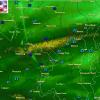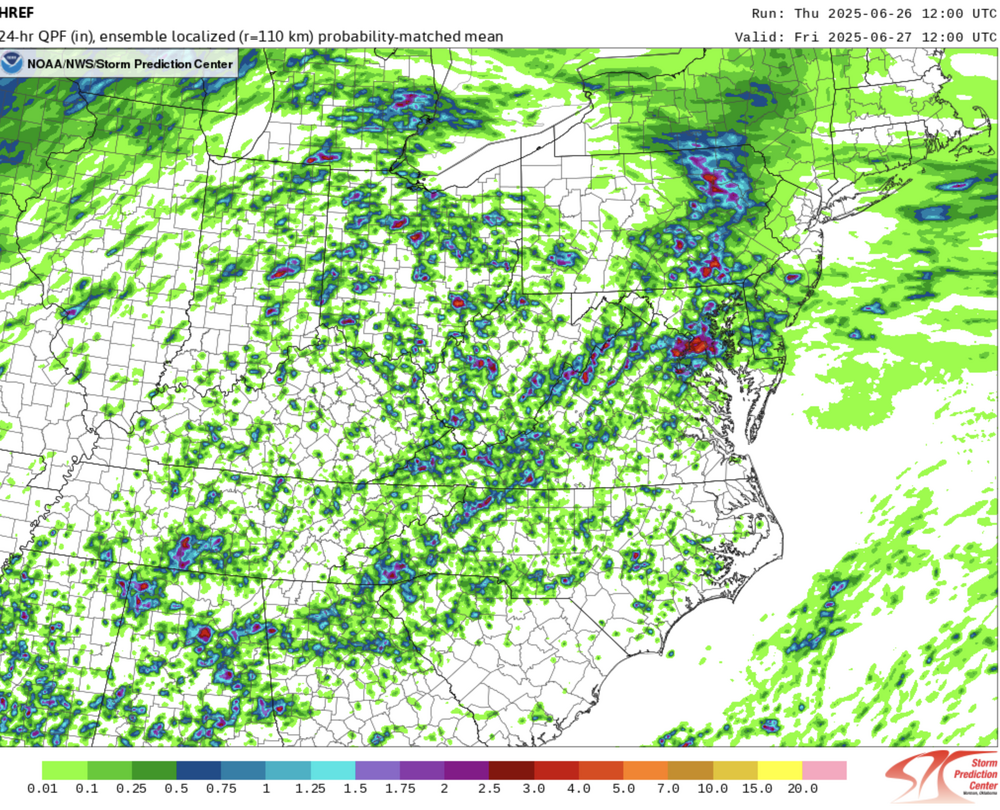-
Posts
3,019 -
Joined
-
Last visited
Content Type
Profiles
Blogs
Forums
American Weather
Media Demo
Store
Gallery
Everything posted by high risk
-
With the big pattern change at some point later next week, ushered in with a strong cold front, you would think that the chances of severe are quite high. But it could be more of a saggy cold front that sometimes doesn't work well here for severe. Definitely has my interest, though.
- 1,378 replies
-
- 2
-

-
- severe
- thunderstorms
-
(and 2 more)
Tagged with:
-
The cooldown for the first weekend in August looks legit - very strong ensemble agreement across modeling systems.
-
The big question is whether there is another round later tonight. We typically don’t do late night convection well, but there is forcing arriving later. Radar is lighting up over WV; guidance is mixed about how significant it is when it reaches DC metro in a few hours.
-
Not sure that this cell over DC needs a tornado warning, but I understand the caution
- 1,378 replies
-
- 2
-

-
- severe
- thunderstorms
-
(and 2 more)
Tagged with:
-
Yeah, the downburst was somewhat localized. Finally got power restored after 6 hours. Got 0.82" today. Unsure tomorrow whether the heavy rains will come north of DC.
-
It got real just south of you. Pretty significant tree damage here and power is out.
-
Significant downburst here in southern Howard County. Big pieces of trees down and no power
- 1,378 replies
-
- 4
-

-
- severe
- thunderstorms
-
(and 2 more)
Tagged with:
-
watch coming soon. The environment isn't awesome for severe, but there is a fair amount of downdraft cape, and storms will be quite organized.
- 1,378 replies
-
- 4
-

-
- severe
- thunderstorms
-
(and 2 more)
Tagged with:
-
Modest (at best) shear but a lot of cape and some downdraft cape. I guess it’s worth a SLGT, but right now, it’s a low- end SLGT.
- 1,378 replies
-
- severe
- thunderstorms
-
(and 2 more)
Tagged with:
-
Love seeing the activity in Anne Arundel and points east moving the northeast, while all of the activity in PG and points west is moving south.
-
A bunch of consecutive HRRR runs have another round of convection overspreading the area towards dawn. The NAM Nest has a similar idea, although it's weaker with that batch and then a bit heavier with some mid-morning showers. I've also heard various media forecasts promoting drier air for Wednesday afternoon, but a clear majority of guidance (minus the always overmixed GFS) keeps our dew points around 70 through Wednesday evening and doesn't really bring in the drier air until early Thursday. And several models show isolated convection just ahead of the front Wednesday evening.
-
Southern MD about to get drowned.
-
Yeah, there is some rotation, but it’s quite broad. But LWX is always nervous to miss something.
- 1,378 replies
-
- severe
- thunderstorms
-
(and 2 more)
Tagged with:
-
Some really weird boundary interaction must be supporting the rotation northeast of Baltimore, as the wind profile is almost as anti-supercell as you can get.
- 1,378 replies
-
- severe
- thunderstorms
-
(and 2 more)
Tagged with:
-
Sorry - I stole your rain. 0.30” here.
-
I’m not seeing much of a signal in the CAMs to support a higher PoP tomorrow out your way, but I hope it works out for you.
- 1,378 replies
-
- 1
-

-
- severe
- thunderstorms
-
(and 2 more)
Tagged with:
-
I'm not sure how much coverage there will be on Monday, but shear will be slightly improved (relative to today and tomorrow), and CAPE should be plentiful. It's probably a MRGL day with some potential for a late upgrade to a SLGT. A bigger threat might be localized flash flooding, with huge PW values and still relatively slow storm motion.
- 1,378 replies
-
- 3
-

-
- severe
- thunderstorms
-
(and 2 more)
Tagged with:
-
If that 9pm cell missed you, it couldn't have been by much. Storms just blew up a bit east of me - getting occasional thunder here.
- 1,378 replies
-
- severe
- thunderstorms
-
(and 2 more)
Tagged with:
-
Something will probably make it us, but it will probably have weakened considerably. Sigh.
- 1,378 replies
-
- severe
- thunderstorms
-
(and 2 more)
Tagged with:
-
Seems to now be looking good for north-central MD. The HRRR, though, wants to weaken the storms with the loss of heating, so we’ll see how much can be maintained over the next couple of hours.
- 1,378 replies
-
- 1
-

-
- severe
- thunderstorms
-
(and 2 more)
Tagged with:
-
I should have noted that the ARW2 showed storms firing across northern VA this afternoon and spreading east. It was an outlier, but it may be on the right track.
- 1,378 replies
-
- 4
-

-
- severe
- thunderstorms
-
(and 2 more)
Tagged with:
-
There is modest consensus (it's far from unanimous) for a somewhat-organized line of storms to drop southeast out of southern PA towards sunset and into northern MD. A few solutions suggest that it could extend into more of central MD. Shear is crap, but low-level lapse rates are good, opening the door to a few wind reports, consistent with the SPC MRGL. Beyond that, my eyes are on Tuesday. A strong front arrives at peak heating, with improving wind fields and some upper level support..
- 1,378 replies
-
- 9
-

-
- severe
- thunderstorms
-
(and 2 more)
Tagged with:
-
LWX issued their flood watch based at least partially on the HREF, which is going to end up doing very well highlighting the area of heaviest rain:
-
Big time blossoming of convection on the east side of DC.
-
Yeah, that HiResW ARW run yesterday that brought storms into northeast MD this afternoon nailed it. They’re not severe, but I’m still curious to see how far to the southwest they can persist.
- 1,378 replies
-
- 2
-

-
- severe
- thunderstorms
-
(and 2 more)
Tagged with:



